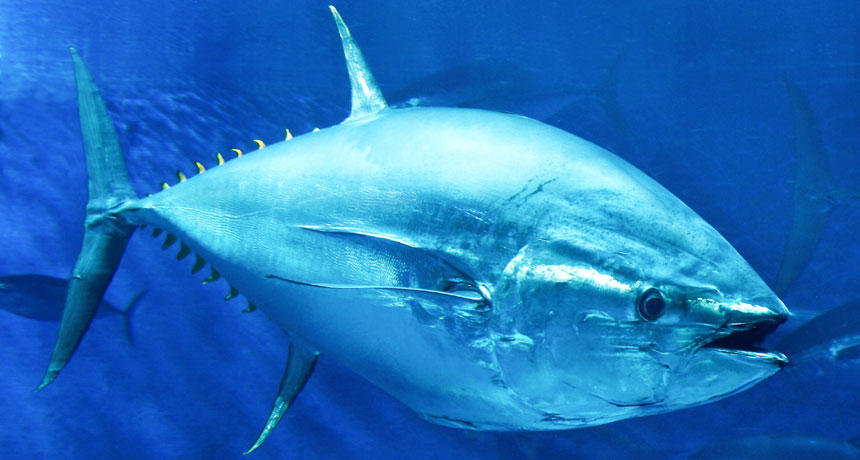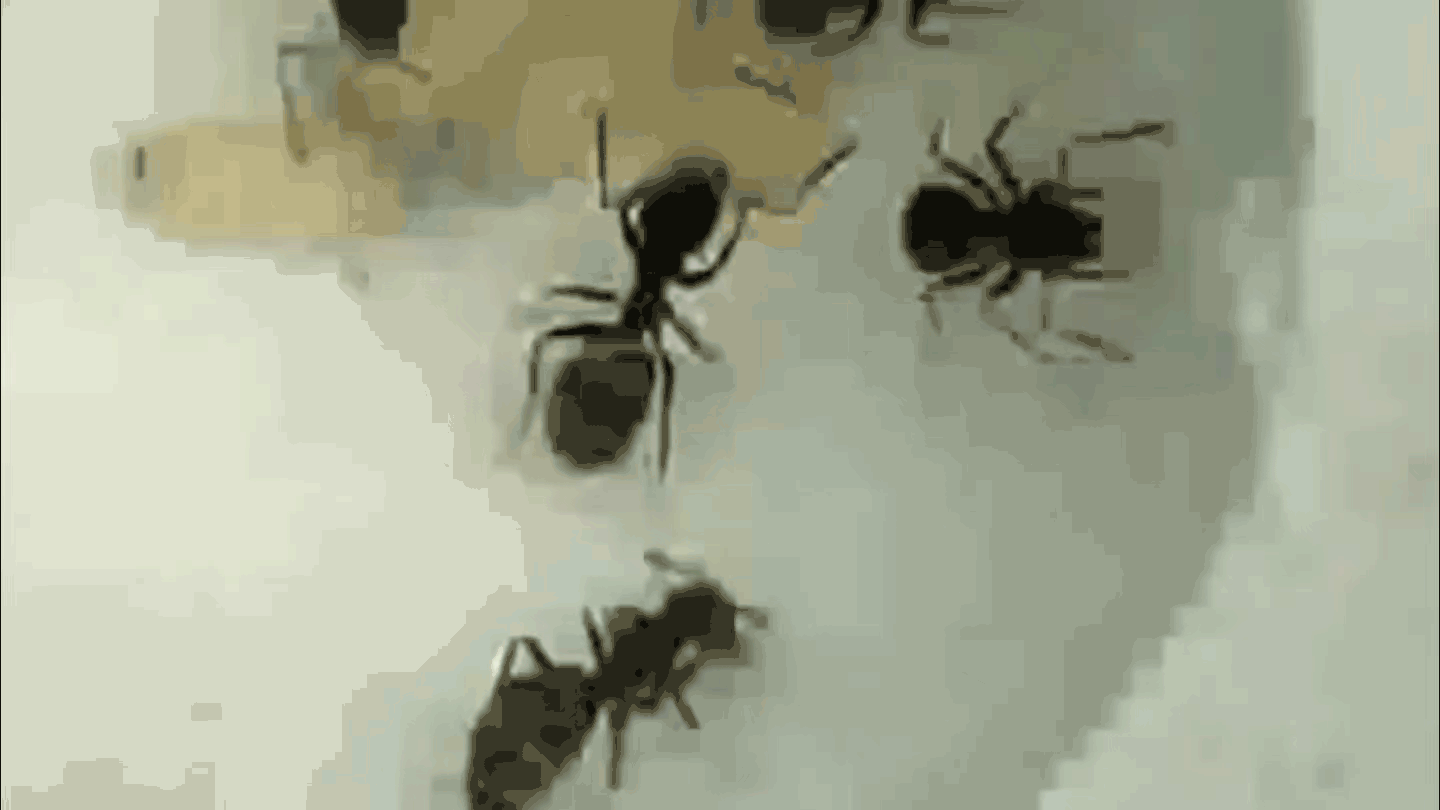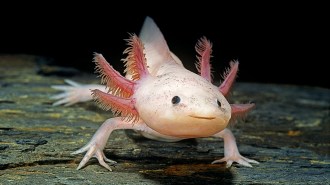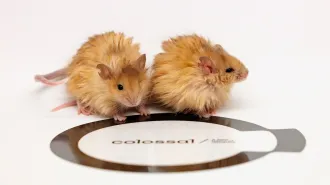Newly discovered lymph hydraulics give tunas their fancy moves
Long-overlooked anatomy raises fishes’ fins for zigs, zags and tight turns

FINTASTIC A sickle-shaped fin on the back of a tuna and one underneath contain shape-shifting systems that scientists have just discovered.
Monterey Bay Aquarium






